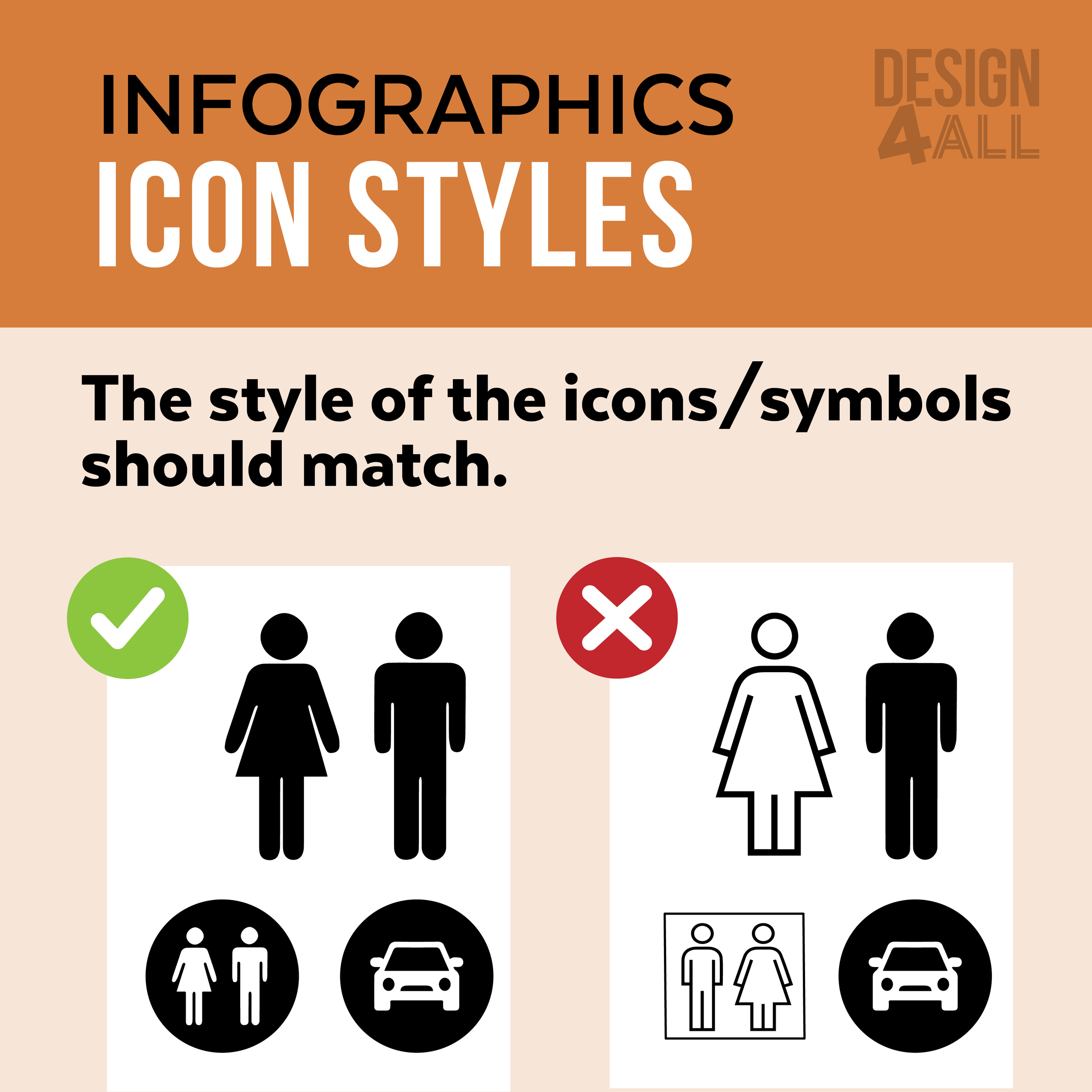Icons & Symbols
Icons/Symbols can keep a viewer engaged and lead their attention to content quickly and communicate effectively.
Symbols & Icons are associated with a particular meaning used to transmit information independently of language.
Icons represent things that are universally recognized, such as a fork, bed, etc., and do not require cultural understanding— the literal, visual representation of the thing
Symbols represent concepts or ideas that may need additional context to understand, such as a cross for religion or—has no logical meaning between it and the object; Symbols represent things, ideas, actions, beliefs, processes, sounds, words, and many other things. They are conceptual imagery that has to be learned.
Indexes will show a relationship with what it represents and point towards its meaning.
Quick Tips
Make sure that the style of the icons/symbols matches.
Use related icons/symbols to emphasize sections.
Use icons/symbols to visually connect data content.
Use Icons to create quick context clues. Icons that relate to your results are helpful for reader engagement and content comprehension.
Graphic Downloads
Design Software
There is affordable and helpful design software available to use for designing Research Posters and Informational Graphics.
Canva.com (Free Versions)
Piktochart.com (Free Versions)
Adobe® Express (Free Versions)
Microsoft® PowerPoint



